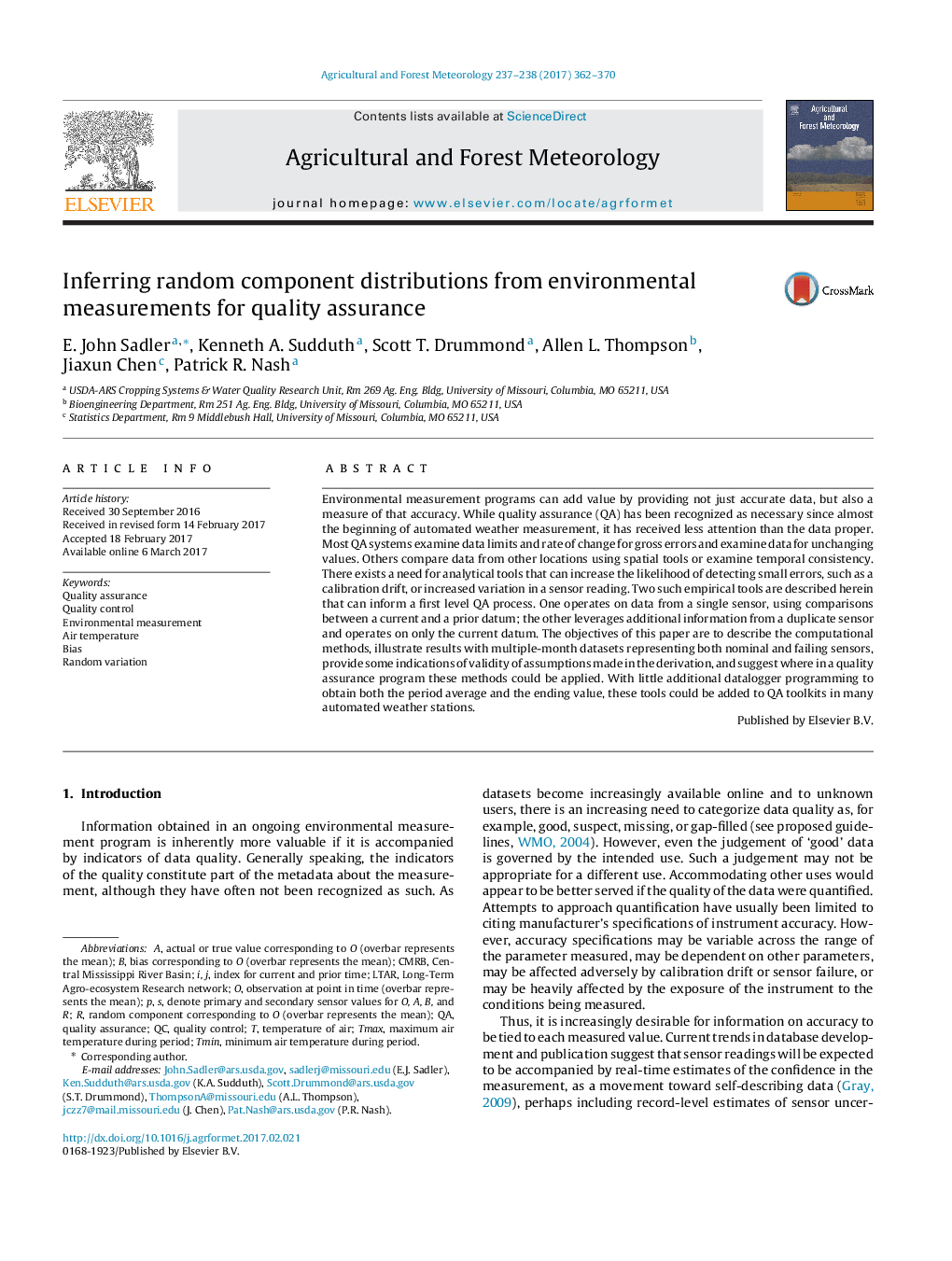| Article ID | Journal | Published Year | Pages | File Type |
|---|---|---|---|---|
| 6457953 | Agricultural and Forest Meteorology | 2017 | 9 Pages |
â¢Data need indicators of quality to be truly useful for future use.â¢A new single-sensor test statistic can inform sensor data quality.â¢A new dual-sensor test statistic uses redundancy to place bounds on data variation.â¢Both are intended for comprehensive near-real-time quality assurance programs.
Environmental measurement programs can add value by providing not just accurate data, but also a measure of that accuracy. While quality assurance (QA) has been recognized as necessary since almost the beginning of automated weather measurement, it has received less attention than the data proper. Most QA systems examine data limits and rate of change for gross errors and examine data for unchanging values. Others compare data from other locations using spatial tools or examine temporal consistency. There exists a need for analytical tools that can increase the likelihood of detecting small errors, such as a calibration drift, or increased variation in a sensor reading. Two such empirical tools are described herein that can inform a first level QA process. One operates on data from a single sensor, using comparisons between a current and a prior datum; the other leverages additional information from a duplicate sensor and operates on only the current datum. The objectives of this paper are to describe the computational methods, illustrate results with multiple-month datasets representing both nominal and failing sensors, provide some indications of validity of assumptions made in the derivation, and suggest where in a quality assurance program these methods could be applied. With little additional datalogger programming to obtain both the period average and the ending value, these tools could be added to QA toolkits in many automated weather stations.
